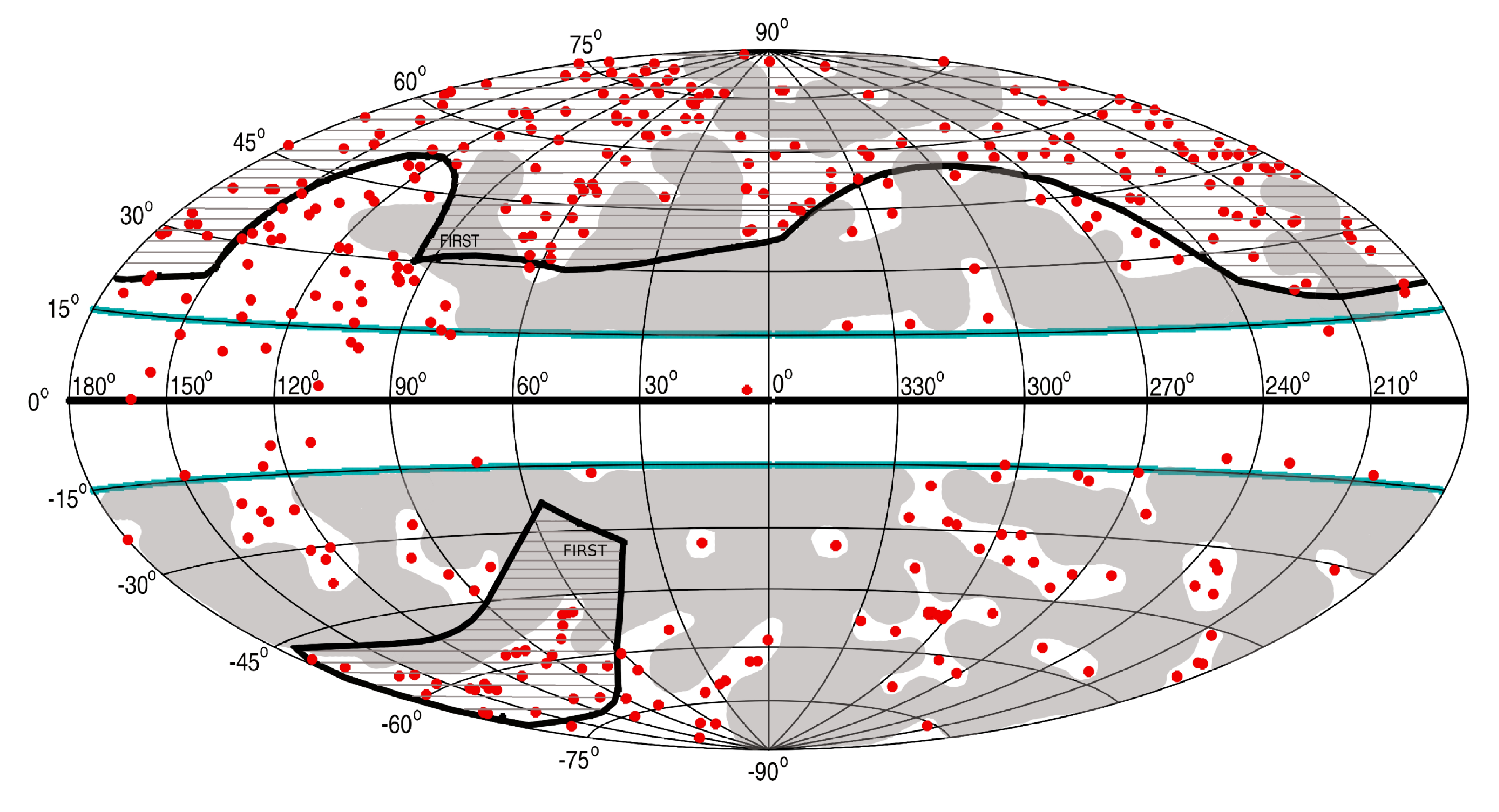Astronomy Object of the Month: 2020, January
< previous Archive next >
The catalogue of giant radio sources
Giant radio sources are a peculiar class of objects due to the extremely large (> 0.7 Mpc) sizes of
their observed radio structures. It is believed that this is relatively rare feature, because only ~5% of
all known radio sources exceed this size. The reasons why some radio sources have grown to such
large sizes are not fully
explained, however detailed multiwavelength studies have progressed significantly our knowledge about the
nature of giants.
It is considered that the large sizes of giants can be due to: advanced age of the radio source, lower density
of intergalactic medium in which the radio jets propagate, more powerful
active nuclei located in the centers
of the host galaxies or multiple episodes of their
radio activity. However, we still don't know which of the
above factors are most necessary to create giant radio source. Most likely, several of them have to occur at
the same time.

The crucial point in research of giant's origin is studying large samples of such objects. Thanks to the work of many people from the Astronomical Observatory of the Jagiellonian University, we catalogued all previously known giants, as well as many new objects. In our catalogue, there are 349 giants with sizes up to 4.7 Mpc. They span a wide range of redshifts (0.016 < z < 3.22) and radio powers (23 < log Ptot < 28.3 W/Hz). The collected sample significantly increased the number of giants at high redshifts (z > 1), as well as those with sizes exceeding 2 Mpc, what is very important in studies of radio source evolution.
Based on the distribution of giants on the celestial plane (Figure 1), it can be seen that there are regions where no giants were found. This is mainly due to the fact that we do not have sufficient radio and optical data which cover whole celestial plane. The largest number of giants is recognised in the regions which are covered by the FIRST/NVSS radio surveys, with availability of optical data from SDSS. In these regions, the highest observed density of giants was 15 objects in the area of 317 deg2. It is also worth to note that there are relatively large regions where FIRST and SDSS data are available, but they still show a low number of giants (e.g. near the North Galactic pole). We particularly should focus on searching the new large radio sources in these areas.
Statistical estimates show that the number of giants is much larger than expected. The current number of giants is not only limited by the availability of radio and optical data, but also by the sensitivity of the radio and optical surveys. Assuming homogeneous distribution of giants on the celestial plane and the detection sensitivity of surveys similar to the sensitivity of FIRST/SDSS, the total number of giants should be at least 2000.
Nowadays, low frequency sky surveys such as LOFAR open a new chapter in studies of giant radio sources. Based on currently available high sensitivity data, the number of giants on the celestial plane should increase six times, giving an excellent opportunity to study large and more homogeneous samples of giants.
Original publication: A. Kuźmicz, M. Jamrozy., K. Bronarska, K. Janda-Boczar, D.J. Saikia: An Updated Catalog of Giant Radio Sources, ApJS, 238, 9, 2018.
Presented results are a part of research conducted at the Department of Stellar and Extragalactic Astronomy of the Jagiellonian University’s Astronomical Observatory. The study was conducted with financial support from the Polish National Science Centre as part of the FUGA program (Project No. 2016/20/S/ST9/00142).
|
Agnieszka Kuźmicz Astronomical Observatory Jagiellonian University A.Kuzmicz [at] oa.uj.edu.pl |


